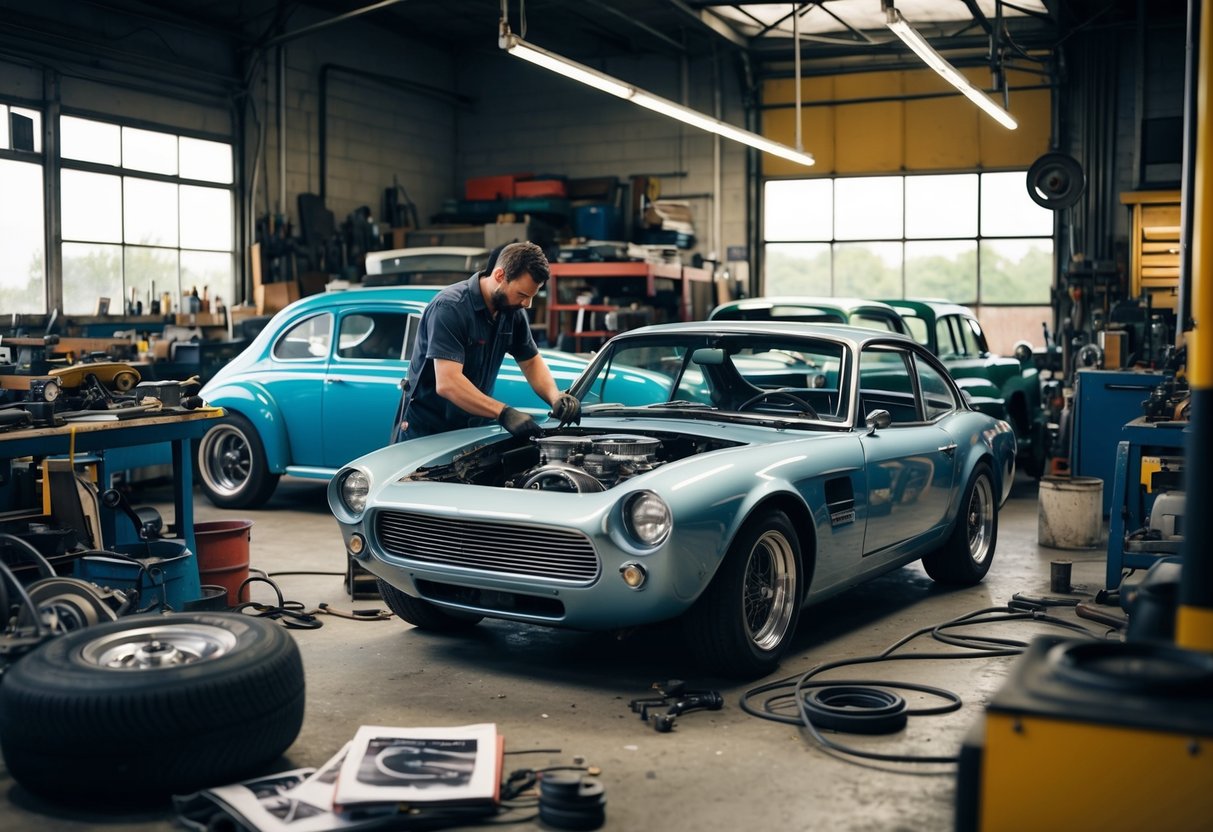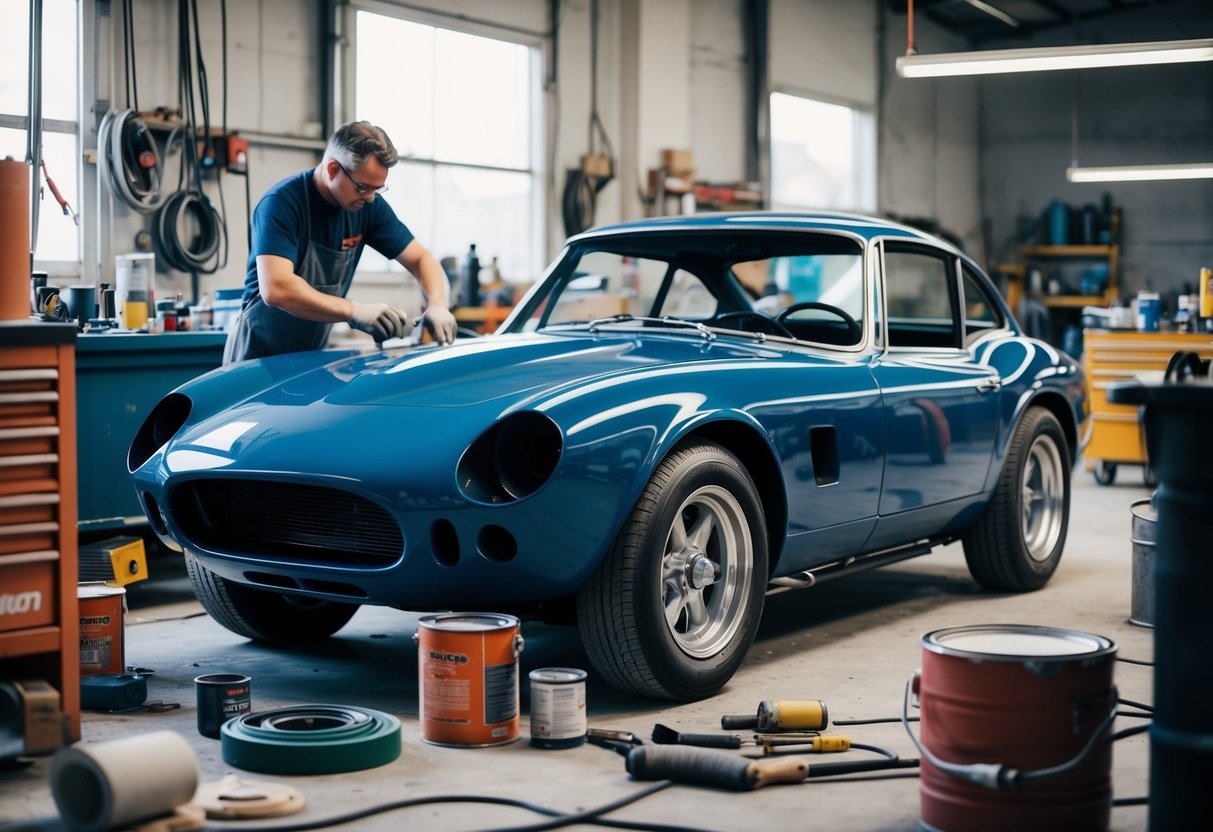
Bodywork Techniques
Restoring the bodywork of a classic car is a meticulous process that requires precision and patience. Techniques such as repairing rust and managing metal fabrication are crucial aspects of effective restoration.
Repairing Rust and Damage
Rust is a common issue when dealing with classic cars, especially those that have been exposed to moisture over time. The process begins with assessing the extent of the rust, which may involve sanding or using a wire brush to reveal the damage. Chemical rust removers can also be employed for less severe cases. After cleaning, it is important to patch or replace the affected panels, ensuring the structure’s integrity is not compromised. Proper sealing with primers and rust-inhibiting paints follows to prevent future corrosion.
Metal Fabrication and Welding
Metal fabrication plays a pivotal role in restoring the structural and aesthetic components of a classic car. Skilled welding is essential for reconstructing panels that have been rusted through or damaged. Fabrication begins with creating precise templates, often from cardboard, which are transferred onto sheet metal. The fabricated pieces are then carefully welded into place, requiring proficiency to maintain alignment and prevent warping. Spot welds are employed initially, with full welds completed once fitment is confirmed. Finishing techniques, including grinding and smoothing, are applied to blend the seams, ensuring a seamless restoration.
Painting and Finishing

Painting and finishing is a transformative stage in classic car restoration, requiring careful selection of materials and meticulous application techniques. Attention to detail is key, starting with the selection of appropriate paints and primers and culminating in the artful application of final coats.
Choosing the Right Paint
Selecting the ideal paint involves understanding the unique requirements of classic cars. Different vehicles may need specific types of paint, such as enamel, acrylic, or urethane, each offering distinct benefits. The original color codes, if available, can guide decisions to retain authenticity.
Compatibility between paint layers is crucial to avoid reactions that may ruin the finish. Using manufacturer guidelines to match primer and paint types can save time and effort. Paint durability is significant, with weather resistance and UV protection ensuring the longevity of the finish.
Preparation and Priming
A smooth surface is essential for a high-quality finish, starting with thorough cleaning to remove dust and grease. Sanding, often labor-intensive, is necessary to eliminate imperfections and achieve a consistent texture. Proper ventilation is important during this stage to reduce hazardous exposure to dust and chemicals.
Priming serves as a foundational layer, enhancing paint adhesion and ensuring surface uniformity. Applying multiple coats of primer may be advisable, with each layer sanded lightly to perfect the surface. This lays the groundwork for a flawless finish, emphasizing the importance of patience and precision.
Applying Final Coats
Final coats represent the finishing touch, adding depth and gloss to a classic car’s appearance. Application methods vary, with spraying often preferred for its even distribution and professional quality. The environment must be controlled to prevent contaminants such as dust from marring the finish.
Multiple coats build up the desired depth and shine, each followed by a drying period for proper curing. Techniques like wet sanding between coats can eliminate minor flaws and enhance the smoothness of the result. For added protection, a clear coat can seal in pigments, ensuring longevity.
Engine and Mechanical Restoration
Engine and mechanical restoration focus on rebuilding mechanical components, precise engine tuning, and ensuring the authenticity of parts used. These elements are crucial in reviving a classic car’s original performance and maintaining its historical value.
Rebuilding Mechanical Components
Attention to detail is essential when rebuilding mechanical components. Each part is meticulously examined for wear and damage. Restorers often replace or restore the engine block, pistons, crankshaft, and other vital elements.
High-quality materials ensure durability and performance. Careful assembly and alignment of these components are crucial to avoid future mechanical issues. Restorers rely on traditional techniques alongside modern tools to achieve precision, balancing authenticity with performance.
Testing is conducted post-assembly to confirm functionality and ensure everything operates smoothly, maintaining the car’s original integrity.



